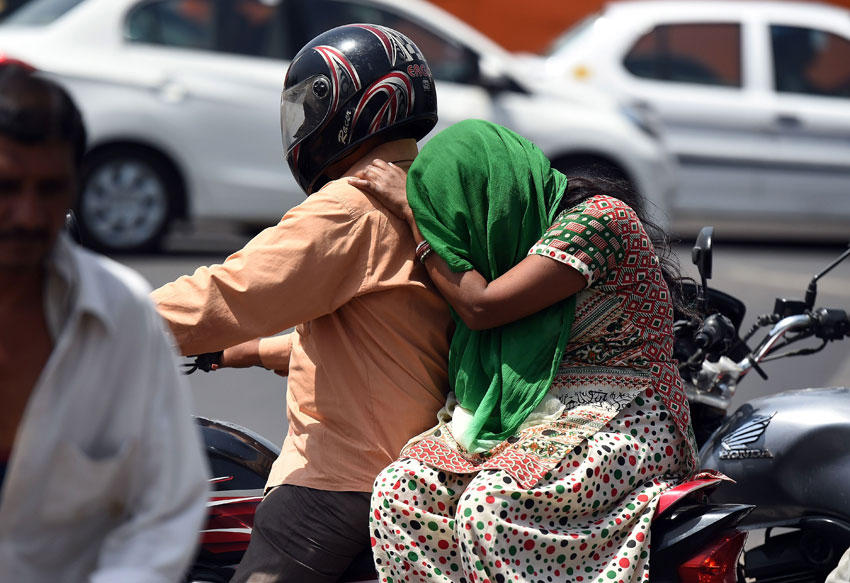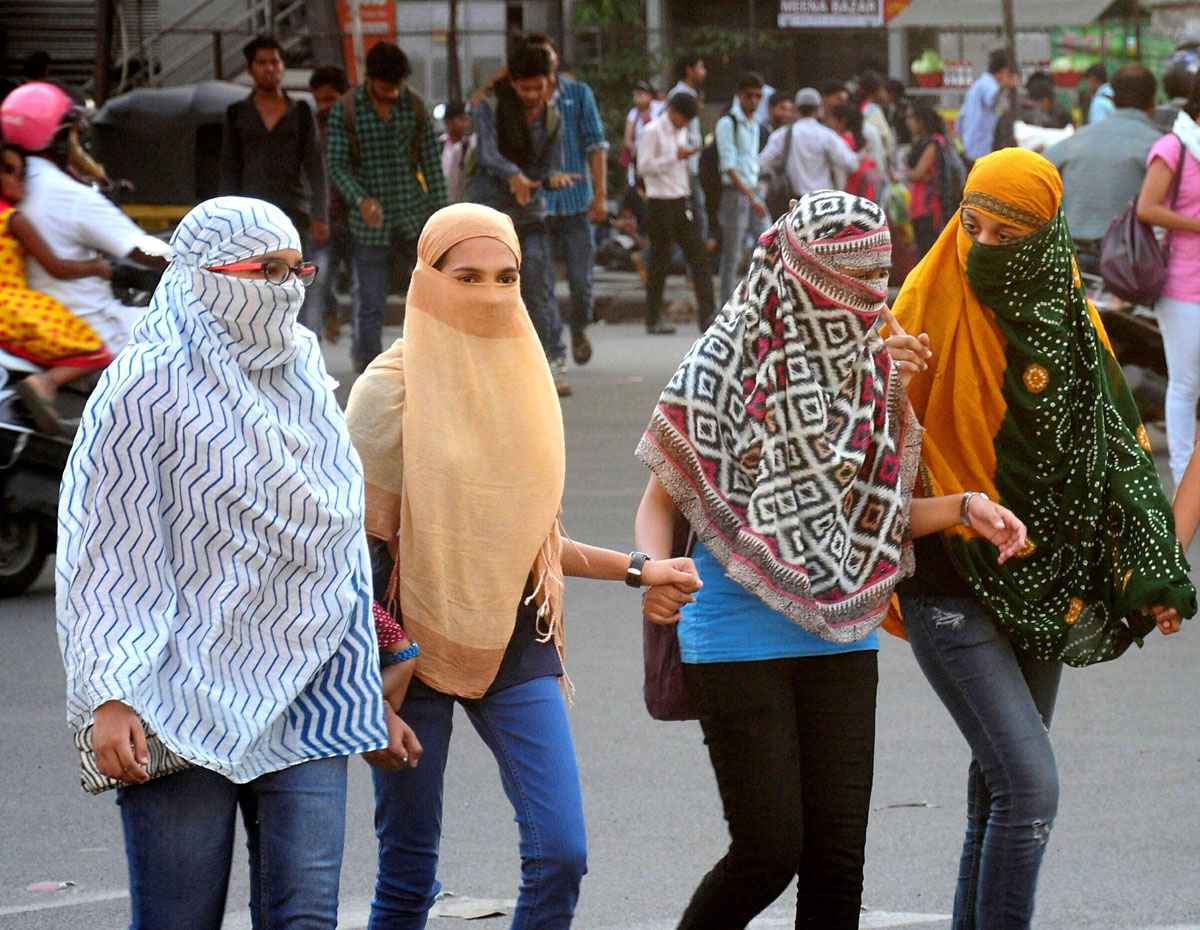The March of Heat Stress: A Century of Intense & Prolonged Summers
Girls cover their faces to get protection from scorching heat during a hot day in Nagpur, Maharashtra, March 30. (Press Trust of India)
Former French Prime Minister, Laurent Fabius said at the environmental meet held by National Green Tribunal in New Delhi that in the coming “four years of inaction” in the U.S. under Trump administration and announcement of massive reduction in U.S. federal climate funds, more efforts by India and China will be required to fill in the gaps, writes Priyanka Bhardwaj. – @Siliconeer #Siliconeer #India #GlobalWarming #NaMo #DonaldTrump #Environment #ClimateChange
As years roll by India is experiencing intense summers and a bit too each time. While it is still March, summer has marched ahead and spring is out!
In relation to this a recent report published in the U.S. journal Proceedings of the National Academy of Sciences announces that even if all or maximum nations meet the targets in the 2015 Paris Agreement that pertains to climate the whole globe will witness “intensifying heat stress” and “extremely hot days every year in this century.”
The definition of heat stress is the intolerable, excessive heat, above 37°C that cannot be endured comfortably by a normal human body and hence adds to the increased “stress.”
In common parlance heat stress may be referred to as heat stroke that can be grave at times.
The research states that if temperatures are allowed to shoot up just by 1.5°C heat stress multiply by about 5-6 times, worse than that felt during 1979-2005.
This impact is expected to be felt by 350 millions living across 44 cities the world over and of the Indian cities that were taken into account are Kolkata, Bengaluru, Delhi, Mumbai, Chennai, Pune, Surat, Hyderabad and Ahmedabad, the largest metropolitan areas, scattered through the length and breadth of the sub-continent, and also amongst the most densely populated regions of the world.
And of the Indian states, West Bengal was pegged to be the worst affected.
The aspiration of the United Nations Climate Change Conference bound 175 countries to arrest rise in average world temperature to “well below” 2°C or 3.5°F above pre-industrial era by imposing limitations in the use of fossil fuels.
The timeline fixed for this arrest of temperature was fixed as second half of the 21st century, but till 2020, $100 billion is the investment it expects from developed countries to enable the developing world to meet any climate change.
However, matters do not seem to be going as desired as the heat waves are expected to only worsen.

Last year India was judged as the hottest since 1901 and the frequency of heat waves is only likely to rise.
Minister for Science & Technology, Y.S. Chowdary acknowledged that severe heat waves have struck large swathe of the country in west Rajasthan, Gujarat and in most of Madhya Pradesh.
On March 29, Delhi burnt 5 notches higher than usual at 22°C minimum and 37.8°C maximum and even Mumbai at 38.4°C sweltered at five notches above season’s average.
Weathermen and Skymet Weather, a weather watch agency, predict an “above normal” summer with heat wave to expand.
Though the India Meteorological Department (IMD) states that maximum and minimum temperatures have risen over above the normal by 4-6°C it cites causes in the influence of prevailing winds and clear sky conditions over north-west and adjoining central India and approaching western disturbance over western Himalayan region.
The burden of heat stress is also influenced by factors such as population density, besides greenhouse gas emissions, warming of sea surfaces in the Indian and Pacific oceans, and this builds up the “perfect storm,” says Tom Matthews, a climatologist at Liverpool John Moores University in the United Kingdom who led the study.
This holds true for places such as Kolkata which is the most heat stressed city in the country as its population is estimated to grow by three times by the end of this century.
Yet there is optimism in the architect of the 2015 Paris Agreement and former French Prime Minister, Laurent Fabius who said at the environmental meet held by National Green Tribunal in New Delhi that in the coming “four years of inaction” in the U.S. under Trump administration and announcement of massive reduction in U.S. federal climate funds, more efforts by India and China will be required to fill in the gaps.
Keep action plans ready, say Met department and NDMA.
At the NGT Conference Union Home Minister Rajnath Singh addressed the climate change adding that the major global challenge puts India in a tricky situation despite it having contributed very little as compared to massive emission of greenhouse gases and the resultant global warming that came from the industrial advancement in developed nations, powered by fossil fuel.
Yet the danger of climate change poses a big threat to millions of our farmers with the changes in weather patterns, increasing intensity of natural disasters and retreat of glaciers in Himalayas that feeds rivers and nurtures civilization.
Judicious use of natural capital, sustainable development, technological improvements in thermal power generation, upscaling of renewable energy and less use of coal or fossil fuels would limit the amount of carbon in the atmosphere and bring global climate goals within ‘feasible’ reach.


